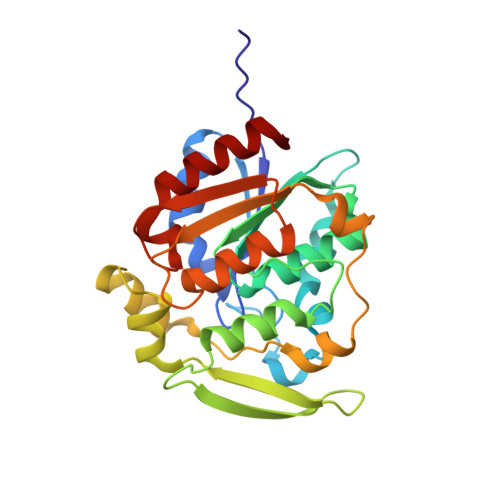Structure of Hydroxynitrile Lyase from Manihot Esculenta in Complex with Substrates Acetone and Chloroacetone: Implications for the Mechanism of Cyanogenesis
Lauble, H., Forster, S., Miehlich, B., Wajant, H., Effenberger, F.(2001) Acta Crystallogr D Biol Crystallogr 57: 194
- PubMed: 11173464
- DOI: https://doi.org/10.1107/s0907444900015766
- Primary Citation of Related Structures:
1DWO, 1DWP, 1DWQ - PubMed Abstract:
The crystal structures of hydroxynitrile lyase from Manihot esculenta (MeHNL) complexed with the native substrate acetone and substrate analogue chloroacetone have been determined and refined at 2.2 A resolution. The substrates are positioned in the active site by hydrogen-bond interactions of the carbonyl O atom with Thr11 OG, Ser80 OG and, to a lesser extent, Cys81 SG. These studies support a mechanism for cyanogenesis as well as for the stereospecific MeHNL-catalyzed formation of (S)-cyanohydrins, which closely resembles the base-catalyzed chemical reaction of HCN with carbonyl compounds.
Organizational Affiliation:
Universität Stuttgart, Institut für Organische Chemie, Pfaffenwaldring 55, D-70569 Stuttgart, Germany. peterlauble@t-online.de















